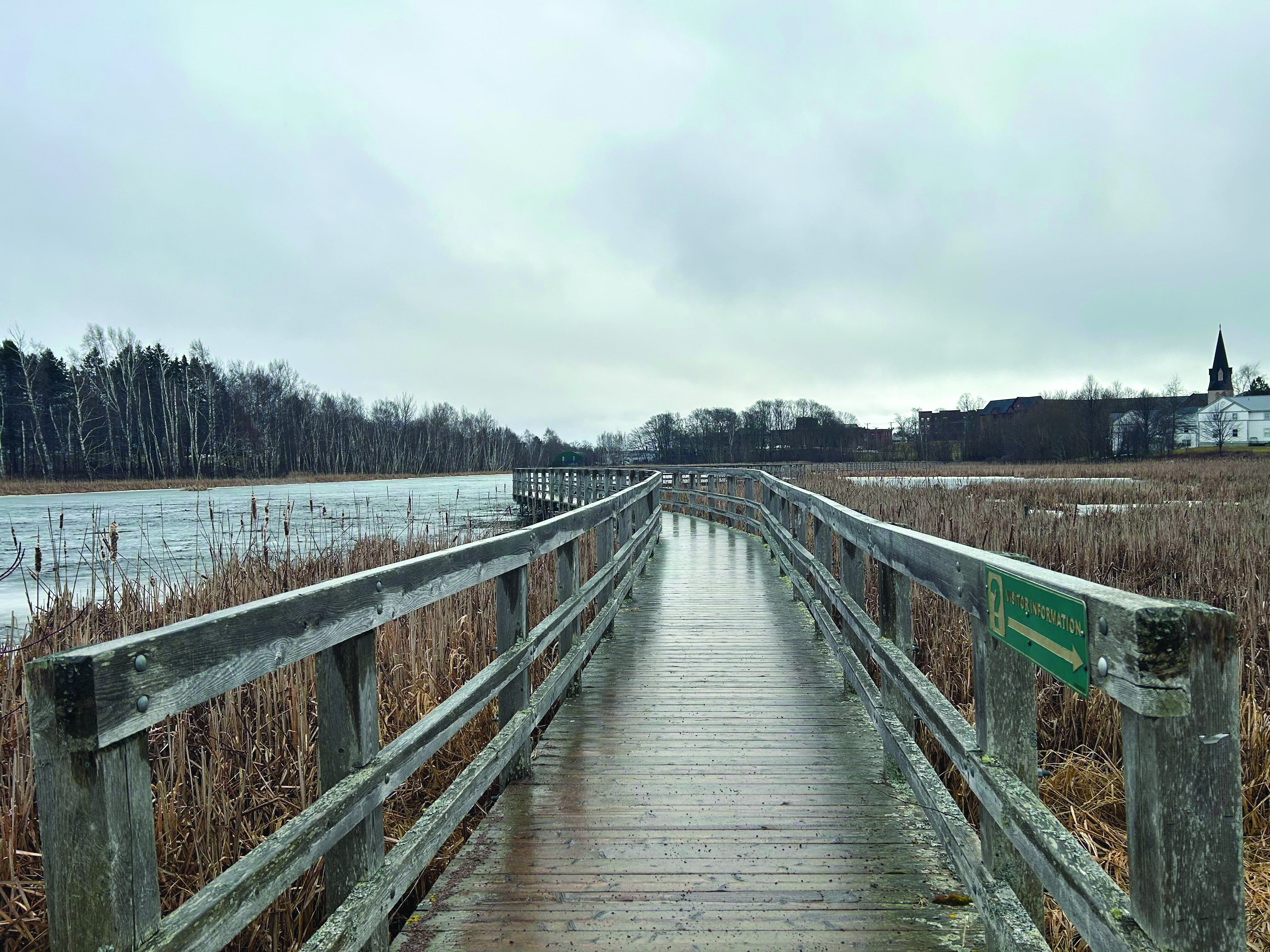The history of Sackville spans nearly three centuries. The earliest colonial settlers of this location were Acadians in the early 1700s. However, in 1755 British forces expelled most Acadian residents and paved the way for the New England Planters, which altered the landscape dramatically. They were invited by Nova Scotia’s Governor Lawrence to establish homesteads around what we now know as Tantramar. Sackville’s cultural tapestry was enriched by their contributions along with those of United Empire Loyalists following the American Revolutionary War. Seeking economic opportunities in the late 1700s to shape the town’s identity, another wave of immigrants from Yorkshire, England arrived. Setting the stage for its vibrant future, these settlers played a significant role in the development and growth of the town. The Tantramar Heritage Trust website was able to provide me with this information, and after exploring this I wanted to explore the landmarks of Sackville.
Waterfowl Park is a landmark known by most residents of Sackville. Ducks Unlimited Canada and the Town of Sackville, through a collaborative effort, established the Sackville Waterfowl Park in 1988 spanning around 55 acres. Contemporarily a haven for diverse flora and fauna, the park was initially a part of a vast saltmarsh historically significant to the Mi’kmaq people. The park offers visitors an opportunity to immerse in the wonders of nature as it boasts over 180 species of recorded birds and close to 200 plant species. Emphasizing wildlife conservation, the park provides educational opportunities from guided tours to interpretative signage and is also listed within the UNESCO Fundy Biosphere Reserve.

As a landmark that is over a century old, the Wheaton Covered Bridge, also called the Tantramar River #2, is a significant landmark in Sackville, and it stands as a testament to the region’s history of transportation. It serves as a vital link between New Brunswick and Nova Scotia spanning the Tantramar river and it was constructed in 1916. Boasting a Howe truss design, which was patented by American engineer Wiliam Howe, it showcases the ingenuity of the early bridge’s construction. It has retained its historic charm despite modifications throughout the years to enhance its structural integrity. In fact, it still attracts visitors and locals today. The Wheaton Covered Bridge symbolizes the perseverance and resilience of the communities it connects as a cultural heritage preserving the shared history for generations to come.
Saturdays are joyful for the residents of Sackville due to the Sackville’s Farmer’s Market. The market signifies the town’s commitment to supporting local producers and for fostering community connections, and it was established in 2012. Although it can be observed as a simple marketplace it actually serves as a gathering place where residents of the town can socialize and support small businesses. The market is supported by prominent organizations of Sackville including the Town of Sackville, Mt. A, and the Atlantic Canadian Regional Organic Network. The market signifies the collaborative efforts of the town and its shared values in contributing to the town’s economic vitality and cultural vibrancy, enriching the lives of the residents.
The statue on 87 Main Street possessed a story that I never had the time to learn, so it became my responsibility to share it. The Honourable George Stanley Sculpture, situated opposite Rose’s Independent Grocer, pays homage to prominent Canadian figure George Stanley, who designed the Canadian flag. Christian Toth was the artist who captured Stanley as a bronze sculpture seated on the bench, contemplating his iconic creation. The statue was unveiled on Canada Day in 2018 and it stands as a tribute to Stanley’s contributions to Canadian history and culture. Serving as a reminder of Stanley’s enduring legacy and his significant role in shaping the nation’s identity, the sculpture was funded by the Province of New Brunswick’s Program for Municipal Development to Commemorate Canada 150. Underlining the town’s rich cultural heritage, Stanley’s multifaceted career is honored by the sculpture, and it serves as a prominent landmark in Sackville.
The beauty of Sackville is not dependent on a singular factor, it is derived from; the history it stands upon depicting the sacrifices of the previous residents, and a community founded with an embracing culture that magnifies the stature of the town. Sackville is not limited to being on a to-do list, instead is a cozy town that leaves much that has to be experienced.





